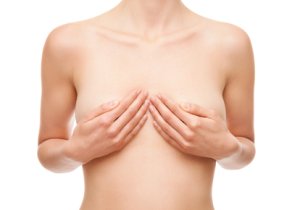Iodine protects against breast cancer
 Iodine's ability to protect against breast cancer has been demonstrated in animal studies. Furthermore, epidemiological studies suggest that consuming more dietary iodine lowers the risk of the dreaded disease, which represents 25% of all cancers in women.
Iodine's ability to protect against breast cancer has been demonstrated in animal studies. Furthermore, epidemiological studies suggest that consuming more dietary iodine lowers the risk of the dreaded disease, which represents 25% of all cancers in women.
Iodine protects against breast cancer by regulating the estrogen balance and the MCF7 gene in breast cancer cells. This was shown in a study that was published in International Journal of the Medical Sciences. The researchers behind this study suggest iodine as being a relevant pharmacological treatment for hormone-related breast cancer.
Iodine is primarily known for its role in the thyroid hormones. However, iodine is also associated with different types of estrogen, progesterone, and possibly even testosterone, insulin, and other hormones.
Iodine regulates the estrogen balance
Dr. David Brownstein has presented convincing data showing how iodine can help maintain the correct balance between the tree different types of estrogen: Estradiol, estriol, and estrone.
It is vital to know the difference between these three types of estrogen. It is primarily the ovarian hormone estradiol that can cause cancer if levels are too high. Estriol, on the other hand, which gets produced in the ovaries and in the liver and adrenal glands (also by men), appears to counteract the carcinogenic effect of estradiol.
Overview of estrogen types |
|
| Estrogen | Function |
| Estradiol |
The only "female estrogen". Estradiol is primarily produced by the ovaries and is required for pregnancy. Stores fat. Stimulates cell growth. Too much estradiol increases the risk of cancer |
| Estriol |
Keeps all mucosa moist and healthy. Important for skin, bones, mood, and sex drive. Estriol gets produced in the ovaries and in the liver and adrenal glands (even by men). Counteracts the carcinogenic effect of estradiol. |
| Estrone | Storage hormone in fatty tissue, which can be converted into estradiol and estriol. |
Iodine shortages create hormonal disturbances
Besides the thyroid gland, ovaries contain more iodine than any other tissue in the body. This also means that an iodine shortage may change the ovarian production of estrogen and cause changes in the estrogen receptors of breast cells. American researchers have observed that women who live in areas with low iodine status produce more estrogen. At the same time, their breast tissue is more sensitive to estrogen. Both factors increase the risk of breast cancer.
Asian diets with iodine and selenium prevent breast cancer
According to epidemiological studies, populations who consume Asian diets have a lower risk of developing breast cancer. Scientists have been particularly interested in studying soy, which contains plant estrogens. However, studies of mice also suggest that daily consumption of seaweed (kelp), a good source of iodine, has the potential to reduce estrogen-related cancers.
For instance, data from WHO shows that Japanese women consuming traditional Japanese diets have a 500% lower risk of breast cancer compared with women in Europe and the United States. It is only fair to add that the Japanese also get large quantities of selenium from fish and shellfish, and selenium has several known anti-cancer mechanisms. It is even important to have a right balance between iodine and selenium, both of which are known for their role in the thyroid hormones.
Did you know that sea salt contains less iodine than normal iodine-enriched table salt?
Lack of iodine and poor iodine utilization may be caused by:
- Poor diets, especially if the lack maritime iodine sources like fish, shellfish, and seaweed.
- Lack of selenium and the wrong balance between selenium and iodine
- Pregnancy
- Smoking
- Fluoride compounds, including toothpaste, mouth rinses, and polluted groundwater
- Dirt- and water-repellant PFCs (typically found in nonstick cookware, baking paper, pizza trays, impregnation etc.
- Chlorine (in chlorinated water and cleaning agents)
- Bromine that is found in pesticides, various types of industrialized foods, certain types of plastic, coloring agents etc. Bromine is even found in polluted fish.
- Lithium that is primarily used to treat bipolar disorders
- High intake of goitrous foods such as soy beans, peanuts, and cruciferous vegetables like broccoli and other types of cabbage (especially raw or unfermented)
Did you know that iodine helps the body get rid of environmental toxins - especially halogens like bromine, fluoride, and chloride - which is why exposure to these chemicals increases your need for iodine
Iodine sources
Iodine is found in fish and shellfish, fish sauce, eggs, iodine-enriched salt and sea salt. Seaweed is a particularly good iodine source.
Sources:
Pernille Lund: Sund og smuk hele livet. Ny videnskab 2016
Frederick R. Stoddard et al. Iodine Alters Gene expression in the MCF7 Breast Cancer Cell Line: Evidence for an Anti-Estrogen Effect of Iodine. International Journal of Medical Sciences. 2008
Anne Krejbjerg. Den Danske Jod - genundersøgelse af befolkningen efter jodberigelsen. Thyreoidea Landsforeningen 2014
http://iodineresearch.com/hormones.html
Search for more information...
- Created on .








